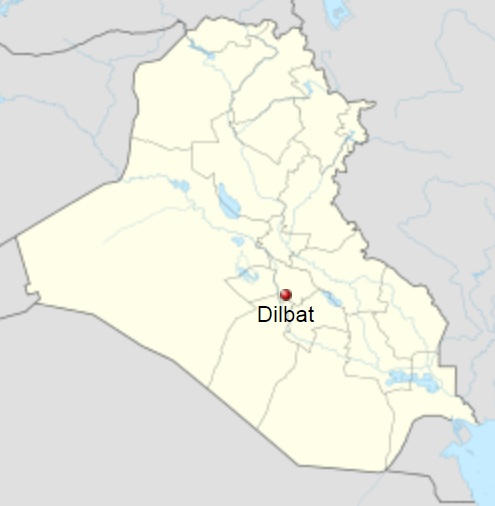
| DILBAT
Dilbat location in Iraq Coordinates : 32°17'44 N 44°27'58 E
Country : Iraq
Dilbat (modern Tell ed-Duleim or Tell al-Deylam, Iraq) was an ancient Sumerian minor tell (hill city) located southeast from Babylon on the eastern bank of the Western Euphrates in modern-day Al-Qadisiyyah, Iraq. The ziggurat E-ibe-Anu, dedicated to Urash, a minor local deity distinct from the earth goddess Urash, was located in the center of the city and was mentioned in the Epic of Gilgamesh.
History
:
Archaeology :
Stone tablet, land purchase, from Dilbat, Iraq. 2400-2200 BCE. Excavated by Hormuzd Rassam. British Museum The site of Tell al-Deylam consists of two mounds, a small western mound with 1st millennium BC and Early Islamic remains and a larger east mound, roughly 500 meters in circumference, with remains from the 1st to 3rd millennium BC. Dilbat was excavated briefly by Hormuzd Rassam, who recovered some cuneiform tablets at the site, mainly from the Neo-Babylonian period. The site was worked in 1989 by J. A. Armstrong of the Oriental Institute of Chicago. Though Dilbat itself has only been lightly excavated by archaeologists, numerous tablets from there have made their way to the antiquities market over the years as the result of unauthorized digging.
Tutelary
god :
Urash was regarded as the father of Nanaya, a goddess of love from the entourage of Inanna, as well as the minor underworld deity Lagamar, worshiped in Susa as an attendant of Inshushinak moreso than in Mesopotamia. Urash was also the husband of Ninegal ("lady of the palace"), and they had a joint temple, as attested by an Assyrian account of its renovation undertaken on the orders of Ashur-etil-ilani.
Source :
https://en.wikipedia.org/ |

